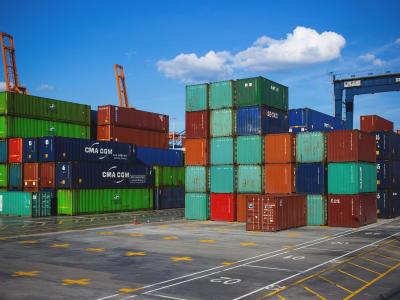According to the world’s largest shipping line and freight data providers, the logjam of containers and ships at the Port of Yantian in China has noticeably improved in the 13 days since COVID-related safety restrictions were lifted and terminals resumed full-scale operations, but cascading delays could impact the peak holiday shipping season because dockworkers have so much cargo to dig out of.
Yard density has dropped to 65 percent, according to shipping company A.P. Moller – Maersk, which has helped boost total production to 85 percent of normal levels. However, according to project44, stay times are still extremely long, and reducing heaps of cargo languishing at factories ahead of the important Christmas season for merchants might take weeks.
According to the Chicago-based supply chain visibility platform, the rolling seven-day average dwell time for exports was 12.9 days and 4.2 days for inbound goods as of July 1, down from a high of 25.4 days last month.
Because of the bottleneck in Yantian, logistics companies in China estimate that clearing the goods that has backed up into warehouses and production facilities might take a month or more.
When COVID cases spiked in late May, Shenzhen’s main port began sending longshoremen home for quarantine and shut down for six days before resuming to full vessel activity on June 24. Backlogs formed at the truck gates and on the highways leading to the port as a result of the halt in operations. According to port officials and container lines, more than 40 vessels were waiting for a berth at one time, and terminal efficiency was just 45 percent.
When ocean carriers redirected vessels from Yantian, congestion spread to other regional ports, but other ports have taken longer to recover.
According to Maersk’s website, the yard density in the Port of Shekou is 100 percent, Hong Kong is 93 percent, and Nansha is 78 percent, with berth wait periods ranging from three to four days.
Carriers’ actions is one of the main reasons those ports stay crowded. According to project44, the number of canceled port calls in Yantian is on the rise, with 17 last Thursday and 12 on Friday. Although the numbers are far lower than last month’s high of 26 blank sailings, they nevertheless reflect 189,203 and 107,326 twenty-foot equivalent units of cargo skipping Yantian, respectively.
Maersk chose to divert the majority of arrivals to alternative ports in the vicinity to lessen the impact on the rest of its network and minimize interruption to clients’ supply chains, as the congestion in Yantian impacted 19 mainline routes.
The process of repatriating services to Yantian, according to Ahmed Bashir, the head of Maersk’s worldwide execution centers, should be completed by the third week of July, according to a YouTube message.
“Please be patient while we work through this transition. To avoid generating additional bottlenecks in Yantian or surrounding ports, we must ensure that it is done in a regulated manner. Our personnel are working tirelessly to restore schedules and refill the area with empty containers “he stated
Furniture and bedding, toys and games, audiovisual equipment, mechanical appliances, plastics, steel, metals, textiles, ceramics, and leather were the types of merchandise shipped to North America that were most impacted by the Yantian congestion, according to a new analysis by Dun & Bradstreet’s third-party risk solutions unit.
Since the beginning of the year, a series of interruptions have plagued ocean freight transit, including congestion at Chinese ports of origin. Because of the rising global economy, carriers have more shipments than they can physically handle. Ships delayed at destination ports due to COVID restrictions and labor shortages; shipping containers not recirculating quickly enough to areas in need; a crane collapse at the Port of Kaohsiung in Taiwan temporarily shutting down some operations at a large terminal; and the Suez Canal closure for nearly a week due to a shipping accident exacerbated the shortage of capacity.
Because of supply chain challenges out of Asia, Brooks Sports Inc. CEO Jim Webber stated on CNBC last week that the company is on an 80-day shipment cycle compared to a normal 40 days.
Large order backlogs in Asian factories, which are as overburdened as the ports, are not factored into transit timeframes. Customers should not wait on purchase orders for the Christmas season, according to SEKO Logistics and other freight managers, who have lead times of many months.
Eric Kulisch’s FreightWaves articles can be found here.
READING RECOMMENDED:
Yantian port is operating at full capacity again; box recovery could take a month.
Trans-Pacific trade slams into the maximum capacity limit.
Container lines have been warned by regulators not to refuse US exports.
Pixabay was used to create this image.
One of our external writers wrote the previous article.
It has not been modified and does not represent Benzinga’s perspective./n





